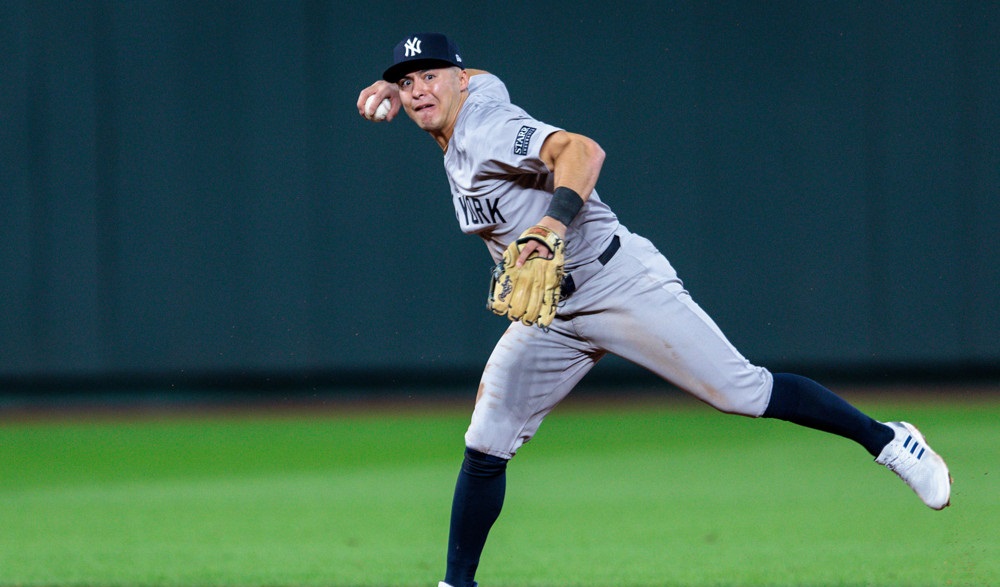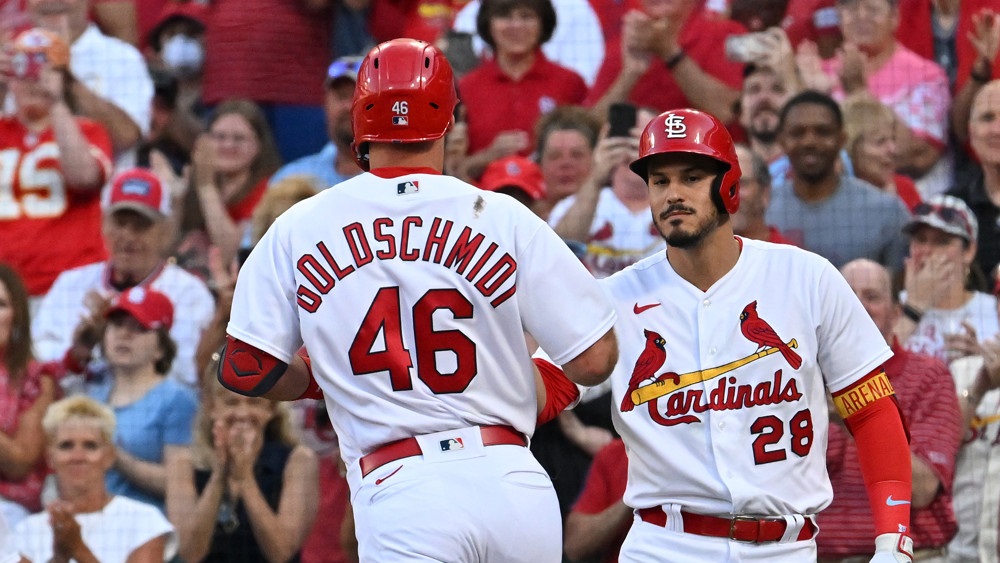As good as they were in other things in 2021, the Red Sox ranked last in the percentage of ground balls and bunts that their defense turned into outs.
I worked with Alex Cora at ESPN and know how much he values defensive excellence, so I’m sure that rankled him.
In 2022, the Red Sox infield has been far better. They’ve converted 76.2% of ground balls and bunts into outs, the eighth-highest rate in MLB and an increase of 5.2% from last season (when they had the lowest rate in the league).
That’s the highest increase in the majors from last season to this season, one-tenth of a percentage point better than their arch rivals, the Yankees.
And they’re tied for second overall in Defensive Runs Saved with the Yankees.
Most Defensive Runs Saved – 2022 Season
| Team | DRS |
| Guardians | 41 |
| Red Sox | 31 |
| Yankees | 31 |
| Astros | 29 |
| Padres | 29 |
We can divvy up the credit for the Red Sox infield improvements in several different ways:
1) Trevor Story changed the look and skill level of the defense
2) Below-average infielders in the past have improved to average levels
3) The team’s infield positioning gives their players a better chance
Trevor Story
The Red Sox signed Story to a huge contract this past offseason and moved him to second base, with Xander Bogaerts staying at shortstop.
The benefit to putting a Fielding Bible Award-caliber shortstop at second base is that it’s turned the right side of the infield into a brick wall.
The Red Sox have converted 85% of ground balls and bunts hit between the first base line over to the second base bag into outs. That’s the highest out rate in the majors. For reference, average in this stat is about 77%. The Red Sox finished 28th last season, turning 75% of ground balls and bunts into outs.
Had the 2022 Red Sox turned grounders to the right side into outs at the same rate as the 2021 team, they would have turned 27 fewer balls to that side into outs, just less than one every two games.
Story’s defensive success coincided with his offensive success after a rough start to the season. In a stretch from May 16 to June 1, Story had 22 RBI in 16 games AND had 4 Runs Saved from turning batted balls into outs.
If we were going to pick two plays that best represents Story’s value, it’s these two game-enders, the first of which has a 15% out probability, the second of which has a 35% out probability but literally saved the game.
Making Negatives Positive
To solely credit Story doesn’t tell the whole story though (ha). Bobby Dalbec, Xander Bogaerts, and Rafael Devers don’t have great statistical histories on the defensive side, but in 2022, they’ve been alright.
Dalbec was at -7 Runs Saved at first base in 2021. He’s at 0 in 2022.
Bogaerts has had eight straight seasons of negative Runs Saved but is holding steady just above league average (1 Run Saved) so far.
And Devers, who had a negative total at third base in each of his five seasons, including a -13 in 2021, is also at 1 Run Saved for 2022.
If we were going to pinpoint one point of improvement among them, we’d refer to Devers and how he’s gotten better at what we call finishing plays.
The way that SIS expected out rates work, we break down out probability at various points, allowing us to look at a fielder’s ability to get to the ball (range) and the fielder’s ability to complete the play.
Completing the play encompasses a variety of things. Usually it refers to throwing, but it can also mean instances of a fielder getting a glove on the ball but not being able to field it, or a slow roller that is fielded but no throw is made.
In 2021, Devers had 38 instances in which he was penalized at least .5 plays saved for not completing a play and finished with -9 Runs Saved related to completing plays (on Fielding Bible.com, we refer to that as Runs Saved from throwing).
This season, he’s only had 6 plays of that nature, and he’s at 2 Runs Saved for completing plays. Much better so far.
In watching video, we noticed that Devers had trouble last season with slow rollers and other plays on which he had to hurry. But this season, the numbers show that he’s thus far been better at handling those.
Rafael Devers on “Slow Hit” Ground Balls
| Plays Made-Opportunities | Success Rate | |
| 2021 | 57/111 | 51% |
| 2022 | 29/45 | 64% |
He’s also been considerably better at completing plays (on balls hit at any speed) when he’s fielded a ball on his backhand.
Rafael Devers When Backhanding a Ball
| Plays Made-Opportunities | Success Rate | |
| 2021 | 116/138 | 84% |
| 2022 | 53/56 | 95% |
Here’s a play that Devers made earlier this season that he’s had trouble with in years past.
Dalbec, Bogaerts, and Devers combined for -26 Runs Saved last season. Right now, they’re at +2. Even if they dipped to -10 the rest of the season and finished with a comparable innings total to 2021, that’s still a sizable bump in defensive performance. And perhaps they’ll be able to hold or better their current numbers.
Positioning
The last component in the Red Sox infield improvement is in their defensive positioning. By our crediting, the Red Sox have 10 Runs Saved specific to how they’ve positioned their infielders, with this almost exclusively being in their defensive shifting. Trying to source this can get a little tricky, so we’ll use one player as an example with help from my colleague, Alex Vigderman.
His work shows that the Red Sox have done their best to put Bogaerts in a pre-pitch spot in which he can get an out, with 37% of his opportunities coming on plays in which the expected out rate (knowing positioning) was at least 80%.
That’s seven percentage points better than MLB average (30%), which is the largest gap of Bogaerts’ career. Simply put: This season, Bogaerts has been in a notably better spot to make a play than other shortstops.
The Red Sox just completed a 10-game road trip on which they went 8-2 and their pitching staff allowed three runs or fewer seven times. Yes, their pitching stood out, but infield defense was part of that winning formula, with nearly 80% of ground balls and bunts being turned into outs. It’s a key component of the early-season turnaround that’s pushed them to respectability.



